
Part 15 of 15.Details the final assignment, an annotated bibliography.
- Subject:
- Information Science
- Material Type:
- Assessment
- Full Course
- Homework/Assignment
- Module
- Author:
- Kelly Griffiths
- Date Added:
- 09/07/2021

Part 15 of 15.Details the final assignment, an annotated bibliography.

Part 1 of 15.Introduction to Shelton State library resources. Includes outlines for a quiz and a discussion board.

Part 2 of 15.Introduction to the research process. Includes outlines for a quiz and a discussion board.

Part 3 of 15.Introduces the database Films on Demand. Includes outlines for an assignment and a quiz.

Part 4 of 15.Introduces the Shelton State Ovid Nursing Books Collection. Includes outlines for an assignment and a quiz.

Part 5 of 15.Introduces Credo Reference. Includes outlines for an assignment and a quiz.

Part 6 of 15.Introduces the database African-American History Online. Includes outlines for an assignment and a quiz.

Part 7 of 15.Introduces the database A to Z World Food. Includes outlines for an assignment and a quiz.

Part 8 of 15.Introduces the database CQ Researcher. Includes outlines for an assignment and a quiz.

This resource will provide college students with the skills necessary to find academic articles in support of a research writing assignment.This resource is written for a college level reader. The exercises are intended to be accomplished by using your college or university library website and the research resources on it. While this resource can be accomplished independently, it has been written to serve as instruction within a research methods course and assumes that students have an actual research project to which they can apply these strategies.

Syllabus for Library Science 101, Honors Library Research Methods in Fall 2018 taught by Professor Cynthia Orozco.
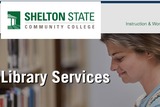
This module describes the Shelton State Community College web page and the resources available from said page.All videos are closed-captioned.
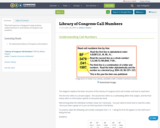
This brief exercise is designed to help students understand how to read Library of Congress call numbers.

These exercises are originally part of the KLaSS module developed by King's College London Library Services to provide information literacy e-learning to students across our faculties. They were built and developed with Adobe Captivate 9 and published in HTML5 format, suitable for use with Moodle.This set of exercises is designed to show students in the Arts & Humanities how to take a research topic and turn it into a useful and relevant set of search terms they can then use in an academic database to retrieve and view journal articles. ProQuest's Humanities Index was used as the demonstration database.The exercises cover three topics:Using effective search terms - the author describes the process by which you generate key concepts from a focussed research question in order to use them as search termsUsing databases - the author describes the advantages of using databases over other search resources, providing guidance both on how to find King's resources and how to use the search terms within themPractice exercise - the students have the chance to recreate the steps laid out in the previous two exercises in a simulation space designed to familiarise them with the various interfaces being used.This section of KLaSS is comprised of two demonstration exercises, narrated by the author Jane Pothecary, and a practice exercise. The practice exercise is not narrated, but designed to act as a practice run for the student where they click the correct part of the screen to advance through the exercise. The exercises have been published in HTML5 format so they should be compatible with any modern LMS. The authors have only used these files in Moodle 3.0, so cannot offer support for another LMS.

These exercises are originally part of the KLaSS module developed by King's College London Library Services to provide information literacy e-learning to students across our faculties. They were built and developed with Adobe Captivate 9 and published in HTML5 format, suitable for use with Moodle.This set of exercises is designed to provide information literacy support to students in King's Health Faculties which incorporates subjects like Medicine, Bioscience, Dentistry, Neuroscience and other health subjects. The lessons cover the following topics:Literature Searching part 1: Introduction to literature searching -Part 2: Choosing and accessing databasesPart 3: Your research question and planning your searchesPart 4: Searching with keywordsPart 5: Searching with Subject Headings (thesaurus searching)Part 6: Combining searches with AND & ORPart 7: Using limits in your searchPart 8: Working with your resultsEach topic has a demonstration video, narrated by the author Karen Poole.The exercises have been published in HTML5 format so they should be compatible with any modern LMS. The authors have only used these files in Moodle 3.0, so cannot offer support for another LMS.
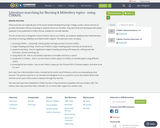
This set of exercises is designed to show students how to use CINAHL, an academic database that holds literature primarily on Nursing, Midwifery and Allied Health subjects.
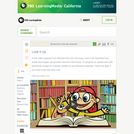
This video segment from Between the Lions features a catchy song that celebrates an important function of literacy: access to information. It also shows the wide world of print, and all of the knowledge that can be gained from it.
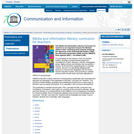
This Media and Information Literacy Curriculum for Teachers is an important resource for Member States in their continuing work towards achieving the objectives of the Grünwald Declaration (1982), the Alexandria Declaration (2005) and the UNESCO Paris Agenda (2007) – all related to MIL.This publication is divided into two parts. Part 1 provides the MIL Curriculum and Competency Framework, which gives an overview of the curriculum rationale, design and main themes. It is complementary to the UNESCO ICTs Competency Framework for Teachers (2008). Part 2 includes the detailed Core and Non-Core Modules of the curriculum.

This is a test resource - not intended to be used by NSDL users. Will be deleted as soon as possible
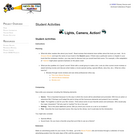
In this project students will report on a book by describing how they would turn that book into a motion picture. After reading and studying the main components of their novel (character, plot, conflict, climax and denouement), students will use their imaginations to explain how they would cast and direct the movie versions. This project also provides enrichment activities where in the students will access archived materials such as the Academy Awards Data Base, movie posters, and movie reviews.